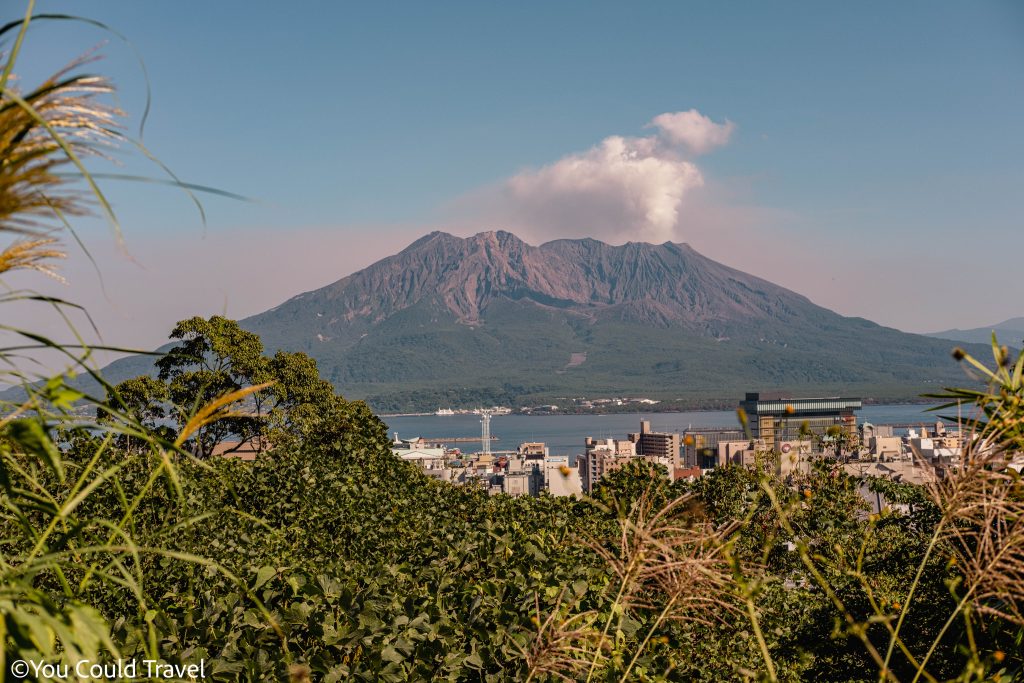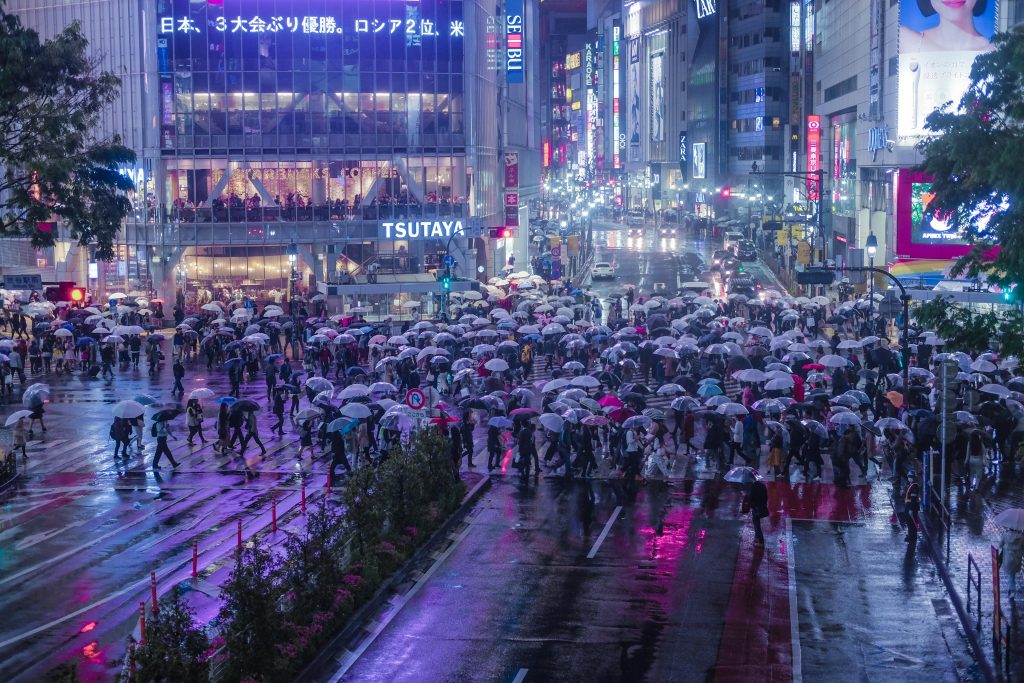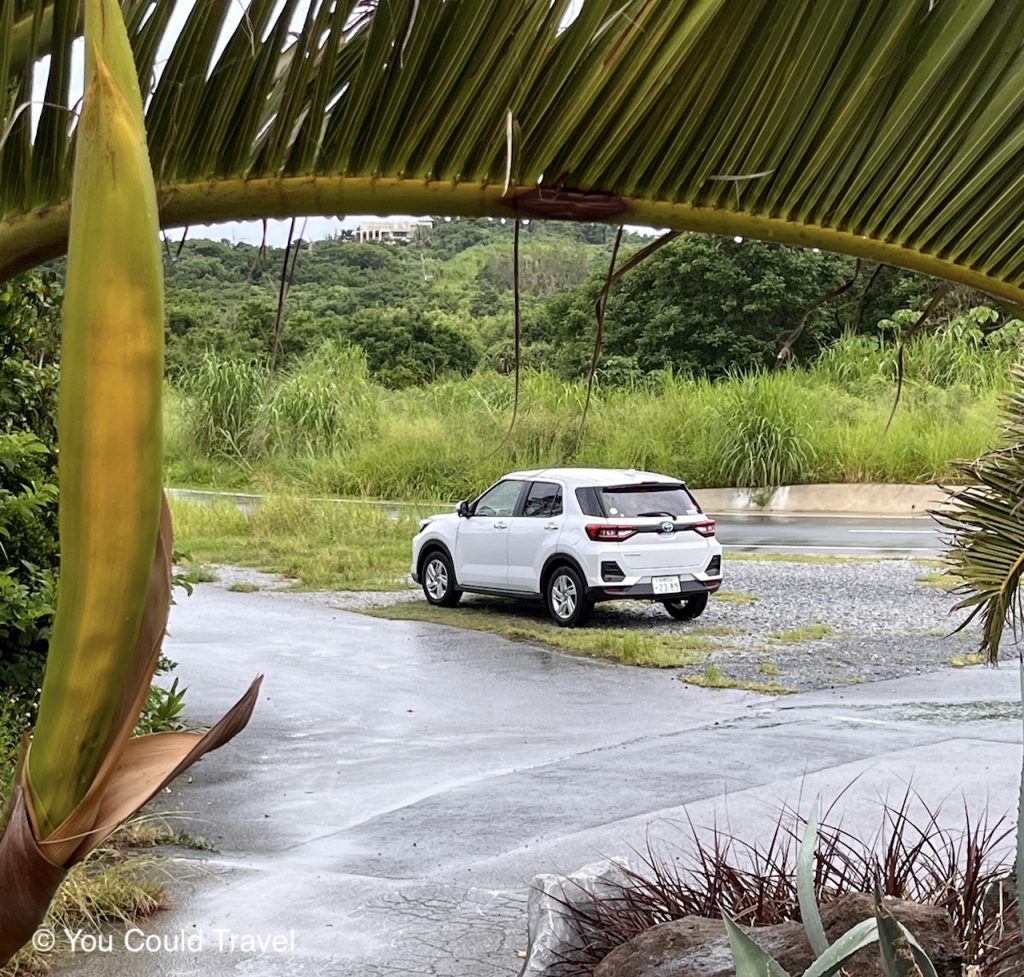Wondering what to pack for Japan, and not sure where to start? Here is our comprehensive packing list for Japan to ensure you have everything you need prior to your trip. During our first 7 days in Japan, we realised we didn’t quite prepare as well as we should have. Thus, we want to help you minimize any potential stress by sharing with you our Japan travel checklist, which includes what to wear in Japan and what outfits you may need to blend in.
Table of Contents
- What to pack for Japan
- Passport
- Visa
- Flights
- Hotels
- Travel Insurance
- Payment Cards
- Copies of insurance and cards
- Japan Rail Pass
- SIM Card(s)
- Wi-Fi device
- Maps
- Guidebooks
- Luggage
- Small Luggage, Backpack
- Power Adaptor
- Camera
- Medication
- Airport Transfer
- Pre-purchased tickets
- Driving licence
- What to wear in Japan
- What to pack for Japan – Season to Season
- What to pack for Autumn in Japan
- What to pack for Winter in Japan
- What to pack for Spring in Japan
- What to pack for Summer in Japan
- Essential clothing to pack for Japan
- Comfortable Shoes
- Thermals
- Rain Coat
- Drying towel
- Fleece
- Travel cubes
- Jeans or trousers
- Shirts
- Neutral t-shirts
- Wool coat
- What to pack for Japan: Toiletries and Sundries
- What not to pack for Japan
- Heavy items
- Casual clothes
- Lots of cash
- Too many electronics
- Hairdryer
- Japan Long-Haul Flight Essentials
- Travel Pillow
- Noise-cancelling headphones
- Kindle
- Water
- Lip balm
- Moisturizer
- Vitamin C
- Pot noodles
- Dried apricots and nuts
What to pack for Japan
Here is a list of items you should pack for Japan. It will cover essentials, such as passports, visas and travel documents, as well as useful things which will make your stay in Japan much more comfortable. We visited Japan on numerous occasions and even lived in Japan for a few months; hence we are confident that our comprehensive packing list for Japan will make your life easier.
Passport
Make sure you bring a valid passport which has at least 6 months validity and an empty page for visas.
Visa
You must have a valid passport and a return ticket to enjoy an up to 90-day stay in Japan. Remember that you cannot work on your Temporary Visitor Visa. You can enjoy activities such as sightseeing, visiting relatives, taking tours, participating in lectures and conferences and make business contacts. To read more about visas, click here.
Flights
As previously mentioned, you should have a return / onward flight ticket to receive a visa. It’s always a good idea to have a printed version of your tickets in case you need them at the border control. Besides, you never know what happens to your electronics, so having a printed copy is a good safety measure.
Hotels
As Japan is a popular destination, hotels should be booked in advance to avoid disappointment. You can find out where to stay in Tokyo and where to stay in Kyoto for tailored recommendations. You usually don’t need a printed version of your booking, and be prepared to show your passport upon check-in.

Japan Rail Pass
The optimal way to explore Japan is with a rail pass that is available for durations of 7, 14, or 21 days, offering unlimited travel across the country. Shinkansen included!
Travel Insurance
Travel Insurance is essential for any country you visit. In Japan, health care is fantastic but also expensive. It’s always good to have a cover, not just for your health but also for cancelled flights, missing baggage and lost electronics. Click to buy your travel insurance.
Payment Cards
Don’t forget to take your credit and debit cards with you. Ideally, you should have a spare credit card somewhere else than your wallet, just in case. Remember that in Japan, not all cash machines work with foreign cards. Recently, you can pay just about anywhere with your card, so there isn’t much need to carry a large sum of cash. For cash withdrawals, head over to a post office ATM or a 7/11 ATM. You can find them in most large subway stations and shopping centres. Smaller towns, villages might not have ATM facilities, so remember to withdraw cash before your visit.
Copies of insurance and cards
In case you misplace your travel documents, it’s a good idea to have a copy of your passport, ID cards and insurance policy. You can take pictures with your phone and send them to your email address as a backup.
Japan Rail Pass
Don’t forget, you need to purchase your Japan Rail Pass in advance. You can’t buy the pass in Japan, so you have to receive your vouchers in the post. If you are unsure whether you need to buy your pass, you can read everything you need to know about the Japan Rail Pass.
SIM Card(s)
You should order a data SIM card prior to your trip to Japan. You can order them to your hotel or to a post office, or to one of the main airports around Japan. Although many places offer free Wi-Fi, I recommend having data on your phone for when you use Google Maps and other travel-related apps. Having the internet on your phone allows you to quickly check what things mean, search for pictures or use an interactive translator.
Wi-Fi device
If you travel as a couple, and you need internet on several devices, you might want to order a Wi-Fi device which provides high-speed internet to everyone in your party. This is a slightly more expensive option, but it usually works out better. Same as with a SIM card, you have to order it to your hotel prior to your arrival. Just make sure you let the hotel know you are expecting a package. Click to check prices.
Maps
Using Google Maps is the fastest, cheapest and easiest way to navigate through Japan. See more apps that you can use in Japan to make your life easier.
Guidebooks
You can check out our 2 weeks in Japan itinerary, find information on our comprehensive Tokyo itinerary, Osaka and Kyoto. Don’t forget to read more about Japanese manners and customs prior to your arrival.
Luggage
Public transport in Japan is incredible, so a wheelie suitcase is a great option for fitting everything you need to pack for Japan. If you are not too sure what to get, you can have a look at our comprehensive suitcase size guide. You can also read more about our hand luggage recommendation.
Small Luggage, Backpack
For day trips or just getting around the city, get a backpack. You can get one which fits your camera, daily essentials, and your travel documents.
Power Adaptor
If you are visiting Japan from North America, you can use your appliances. However, visitors from Europe will need to pack a converter. UK plug to Japan plug converter.
Camera
You should absolutely not forget to pack your camera for Japan. This weird and wonderful country is full of epic photo opportunities. If you decide to visit during the cherry blossom festival, a camera is definitely a must.
Medication
You can bring your prescription medication with you, but make sure to check for any restrictions. If you have a prescription for narcotics and psychotropics, you will need to apply for specific permission from the Japanese government prior to your travel. You can find most over the counter medications in Japan. Note that not many Japanese speak English, but usually, you will find that most pharmacies have a list of symptoms in English which you can point at. This will enable the pharmacist to recommend you painkillers, vitamins, or flu medicine.
Airport Transfer
You can purchase your airport transfers in advance, in which case it is a good idea to have a printed copy with you. If it’s your first time in Japan, it might be easier to book this in advance, so you avoid public transportation when you are jet-lagged.
Pre-purchased tickets
We use Get Your Guide when we book activities in Japan. We like to pre-book our tours in advance as we know how popular they are. Don’t forget to read more about the oiran makeover, which was the highlight of our trip. You may also be interested in learning more about sumo practice, or you might fancy a vibrant Tokyo pub crawl.
Driving licence
If you want to rent a car in Japan, remember that you will need an “International Driving Permit 1949” if you are from the UK or an “International Driving Permits (IDP)” if you are from the USA. You need to bring your original licence card as well as the International Driving Licence you get from the government in your own country.
What to wear in Japan
When you need to pack for Japan, finding the right clothes can be a bit challenging. This is because the weather can be temperamental and challenging. Depending on when you want to visit Japan or what region you wish to visit, you can expect different recommendations. As a general rule, you should pack layers for Japan. Avoid overly casual clothes, as Japan is quite conservative. Here is what to pack for Japan to not look like a tourist.
Women wear different clothing depending on age. In general, you will notice Japanese women dress smart, in neutral, conservative colours. The younger generations will have a more casual style, but still pretty fashionable and chic. You will notice kawaii fashion around Harajuku, although typically, you will find loose and flowy outfits. Women of age will wear stylish clothing in black, grey, white, or beige. You will notice that no Japanese put their body on display, which is more classy and beautiful in my opinion.
Have a look at our comprehensive guide on what to wear in Japan for any seasons.
Men dress quite conservative in neutral colours as well. Most salarymen will wear a suit, whilst fashion addicts will add some accessories such as Sperry type shoes, scarves, and hats. You won’t see loose tank tops or tracksuits in Japan. When it comes to fashion, Japan is simple, minimal, and modern. But just because it is a conformed society, it doesn’t mean it can’t get creative. The beauty of the Japanese fashion is that it incorporates its creative outfits in a very subtle way. You won’t see flashy jewellery or out of ordinary accessories.
What to pack for Japan – Season to Season
What to pack for Autumn in Japan
In Autumn, temperatures are quite cool, so you should pack a wool coat. Dark jeans, long coats, jackets are fashionable and widely used. Neutral scarves are popular for both men and women. When in doubt, you should stick to autumn colours. Think brown, beige, black, and greys. As layers are always recommended, make sure you pack your thermals, as well as a nice cardigan and a simple sweater.
What to pack for Winter in Japan
Winter is the time for heavy jackets and waterproof boots. Men don’t tend to wear boots, but taller converse or Sperry type shoes. You should pack layers starting from thermals, through shirts, sweaters and long, heavy wool coats.
What to pack for Spring in Japan
Spring in Japan is very popular due to the cherry blossom season. March is still chilly and requires a woolly coat, whilst April and May are warmer. Simple pastel colours are perfect for Spring. Think t-shirts, blouses and shirts. Don’t forget dark jeans for both men and women. Sandals are not that popular in Japan as they are in the West. Even during the warm Spring, you will mainly see Japanese wearing shoes.
What to pack for Summer in Japan
Summer brings an array of colours, although you don’t expect to see a huge variety of combinations within one outfit. The Japanese are incredibly stylish, and they usually mix a spot of colour with a dark pair of trousers or skirt. Women wear lighter colour dresses, and you can wear t-shirts, flats and sneakers. This is the time when you might see women in sandals.
Essential clothing to pack for Japan
Comfortable Shoes
You will be required to take your shoes off when entering various restaurants or temples. It’s best to have a pair of shoes which you can slip in and out with ease.
Thermals
Apart from summer, it’s always a good idea to have a basic layer of thermals with you. We recommend Merino Wool thermals as we used them during our several trips to Japan and have been cosy.
Rain Coat
The weather in Japan is incredibly unpredictable, so expect to get unexpectedly caught up in the rain. Pack a light raincoat with you and have it in your backpack.
Drying towel
A small towel is extremely handy when visiting Japan. Great for summer, when the temperatures and humidity soar, and you get really sweaty. The towel can also be useful during the rainy season.
Fleece
A fleece is a fantastic addition to your packing list for Japan as it can be used during the flights as well as during cooler nights around the city. Make sure you pick neutral, classy colours.
Travel cubes
Great to organize your clothes and make more room in your luggage.
Jeans or trousers
Dark jeans and slim trousers are fantastic for Japan. Just make sure they look classy. No baggy clothes, please.
Shirts
For both men and women, shirts are great year round. You can use them alongside a cardigan during the colder months, or on their own during Spring and Summer. You can wear them tucked in your trousers and jeans alongside a pair of nice brogues.
Neutral t-shirts
Neutral t-shirts are excellent for both women and men. Remember to go for simple and modern t-shirts without any funky designs. This will enable you to blend it.
Wool coat
For the colder months, wear a long wool coat. I recommend a darker colour, although beige and brown are perfectly acceptable too.
What to pack for Japan: Toiletries and Sundries
You will find an array of shops all over Japan, which sell everything you can possibly imagine. In fact, most items are way cooler in Japan than anywhere else in the world, hence I recommend packing the strictly necessary only. It’s a lot of fun to visit shops such as Loft, where you can spend hours shopping for cosmetics. Most toiletries in Japan are well priced and good quality. You will also find any cosmetic shops along the main roads in pretty much any busy city.
Here is a list of essentials you should consider packing for Japan:
- Toothbrush and toothpaste.
- Sunscreen and your sunglasses.
- Don’t forget your deodorant and some basic painkillers. (check border regulations, though!)
- Tampons and pads for women and razors for men.
- Have a decent toiletry bag to keep everything organized.
What not to pack for Japan
Heavy items
Avoid carrying heavy items with you. Japan is full of epic shopping opportunities, and you will want to leave some room in your luggage for clothes, toiletries, and souvenirs. I found shopping in Japan to be the best in the world.
Casual clothes
As already mentioned, Japan is rather conservative, so avoid wearing overly casual clothes which may work in the West. It’s best to respect others in Japan, and for that, you have to blend in. Start by dressing simply and smart-casual, and familiarise yourself with manners and customs in Japan.
Lots of cash
Japan used to be a cash only society, but not any more. As previously mentioned, most businesses accept your international card. Have some cash with you, or use the ATMs when you need to make a withdrawal.
Too many electronics
It’s nice to disconnect during your holiday. It’s best to only bring what’s strictly necessary. Have your phone, kindle and, if you need it, your laptop. Don’t forget the adaptors.
Hairdryer
Every hotel will have a hairdryer available in the room. If you also need an iron, make sure to ask at the reception. All hotels will have a trouser press available on every floor.
Japan Long-Haul Flight Essentials
Travel Pillow
Make sure you get a comfortable sleep during your long flight
Noise-cancelling headphones
Ever since I discovered them, I absolutely can’t imagine travelling without them. It’s amazing to not have to listen to the sound of the airplane engine or other loud travellers around.
Kindle
Get a few books and immerse yourself in a good story during your flight.
Water
I like to buy a few bottles of water at the airport, so I don’t have to rely on the flight attendants. This way I can keep hydrated. I recommend at least 1 litre of water during a 10-hour flight.
Lip balm
I get really dry during a long flight, and the lip balm helps quite a bit.
Moisturizer
I use a light moisturizer for my skin because it doesn’t block the pores. It’s great to use around my T-zone when I get really dry.
Vitamin C
I always pop a couple of 500 mg vitamin C pills before my flight to avoid getting ill. I highly recommend boosting your immune system prior to getting on a plane.
Pot noodles
Sometimes, I don’t like the food served during the flight. To satisfy my hunger, I pack pot noodles that only requires some hot water and a fork, which I can get from the flight attendant.
Dried apricots and nuts
As a quick pick-me-up snack, I get some dried apricots and nuts. I avoid oily foods such as crisps or other starchy foods.
Please note that if you forget any of the above items, you can get absolutely everything once you arrive in Japan.
More about Japan
- 2 weeks in Japan itinerary
- 3 weeks in Japan itinerary
- Things to do in Japan
- Things to do in Tokyo
- Where to stay in Tokyo
- 7 days in Tokyo itinerary
- Things to do in Kyoto
- Where to stay in Kyoto
- 5 days in Kyoto itinerary
- Things to do in Osaka
- Where to stay in Osaka
- 4 days in Osaka
- Is Japan expensive?
- Planning a trip to Japan
- What to pack for Japan









Leave a Reply